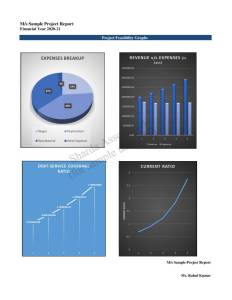Project Report For Biscuit Manufacturing
Introduction
Project report for Biscuit Manufacturing is as follows.
In a factory, the biscuit is made in four stages: mixing, shaping, baking, and cooling. In the mixing step, huge mixers combine flour, oil, sugar, water, and other ingredients in the proper proportions to make the dough.
Biscuits are usually hard, flat, and unleavened in most nations, notably the Commonwealth and Ireland. They are generally sweet and contain sugar, chocolate, frosting, jam, ginger, or cinnamon.
They can also be savoury and resemble crackers. The name “cookie” refers to a soft, leavened fast bread similar to a scone throughout much of North America, whereas “biscuit” refers to a soft, leavened quick bread comparable to a scone. look at the biscuit.
In the biscuit, the production of biscuits has increased in tandem with the increase in demand for biscuits, and the production has established a firm footing in people’s nutrition, notably in children’s meals.
Furthermore, biscuit demand is increasing as a result of product diversity and the development of demand-driven technologies.
Market Potential Of Biscuit
Manufacturing
As the global demand for nourishment rises, so does biscuit consumption.
Demand for snack biscuits is increasing every day as a result of an active lifestyle, women’s active participation in business, less time spent creating homemade meals, and an increase in income level.Producers place a high value on this market, which is rapidly developing around the world.
This rapidly increasing business, which had reached $76 billion 385 million by the end of 2017, attracted both small and large industrial players. By 2025, this market is estimated to be worth $110 billion. There appears to be a lot of competition.
The worldwide biscuit industry is being kept alive by the growing demand for healthy snacks and rising food consumption per capita in emerging nations.
With easy food demand, packaging innovation, and growth in the youthful population, the industry is projected to continue its upward trajectory. Growth in the biscuit sector has increased per capita biscuit eating across the world.
Digital pathology services are intended to improve efficiency and give near real-time picture access. Modern Aperio Leica AT2 Turbo scanners produce consistent digital pictures that are immediately available in the central image database shared by all sites when scanning is done.
Mass file transfers may be performed daily to regularly sponsors access to photos, and semi-automated file transfer systems are being developed to speed up the file transfer process even more.
People’s preference for nutritious and enjoyable snacks is expected to enhance competitiveness in the global biscuit industry.
Because of the local and foreign participants, the market race will be very distinct. This rivalry will be beneficial to the expansion of the biscuit market.
Project Report Sample On
Biscuit Manufacturing
Need Help?
Create 100% Bankable Project Report





